More "Baby" Birds: Northern Cardinals
These birds have fledged but still wearing their juvenile plumage
In May, I saw this recently fledged Northern Cardinal. I believe the bird below was a young male Cardinal alongside his father. The young male was beginning to show red feathers in his face and belly.
The adult Cardinal was still feeding his youngster. You can see bits of sunflower seeds and peanut suet cake on the tip of the father’s beak. He seemed to be looking at the fledgling as if to ask, “Have you had enough or are you ready for more?”
When the adult left for a bit, the juvenile Cardinal began begging. You can see his open bill and his wings are fluttering, typical begging behavior for young birds. Young Cardinals continue to be fed by their parents for a month or two after leaving the nest.
The bright red male Cardinal returned, perhaps with more food inside its bill. During this period shortly after the young Cardinals fledge (leave the nest), the male adult does most of the feeding of the young birds. The adult female immediately begins working on a new brood at this time by laying eggs and sitting on them.
Here is another look at the same bird on the same morning. Young Cardinals have a black bill when they hatch. During their first winter, as they develop their adult feathers the bill will slowly turn the orange color that adults show. The photos above and below both let you see how red this Cardinal’s tail already is.
Meanwhile, another young Cardinal was feeding itself on the ground. At this stage of life the Cardinals continue being fed by parents while they also learn and begin feeding themselves. You can see that this bird also has a very dark bill but it has almost no red feathers. I believe this is a juvenile female Cardinal.
Last week (in September...) I saw some other juvenile Cardinals. This was four months after the first set of young ones that I saw last May. I am certain that these are young from the second brood of the Cardinals. Below is a juvenile female Cardinal. You can see some new feathers growing on its head.
Here is a juvenile male Cardinal. It has much more red feathers at this time. Neither parent was spending any time with this pair of young which I beleive are from the second clutch of the summer. If “mom” began her second brood in mid-May, and she incubated the eggs for 11-13 days, the young from her second brood would be three months old by now.
It takes young Cardinals one to two months to become fully independent. The Cardinals that hatched in May have probably moved on to their own territories by now and the young ones I saw in September already look very independent.
Once young birds fledge, the full-time job of their parents in raising young is complete. Adult birds will then begin their annual molt at that time. They must replace all of their old, worn down feathers. Here is the female adult Cardinal. You can see that she has dropped her crest feathers and is sporting a very short crest now. She also looks kind of patchy on her shoulders. The tail feathers look very ragged to me also, and they will be replaced soon.
The molting process requires high-protein foods along with foods that are carotenoid-rich (to enhance color). For Cardinals, it may take up to 12 weeks to replace all of their feathers. Because these Cardinals do not migrate, their molting process takes longer than birds that need to get new feathers quickly in order to migrate well. Birdnote explains here



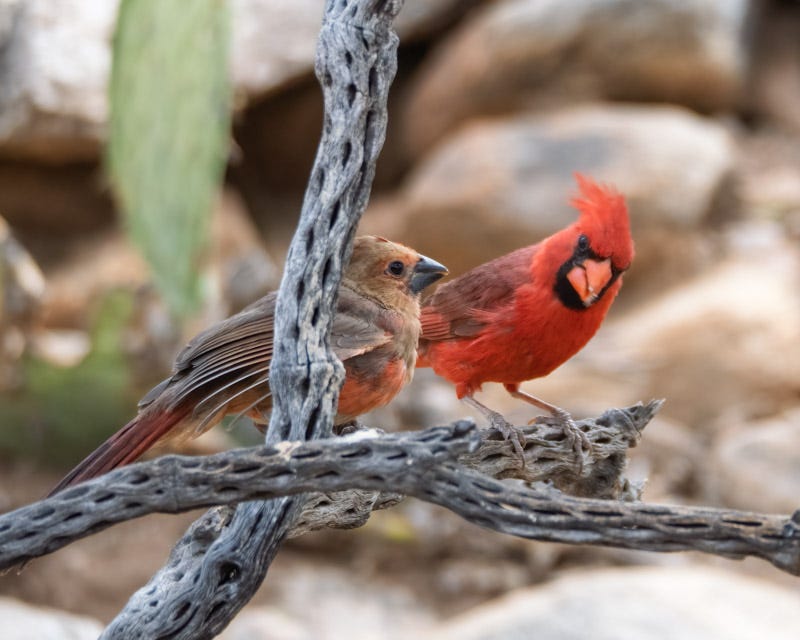
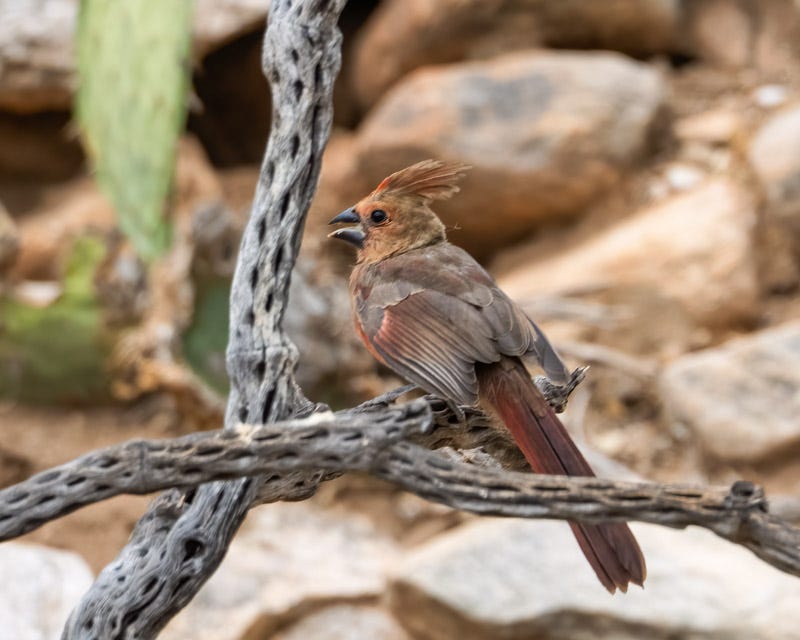

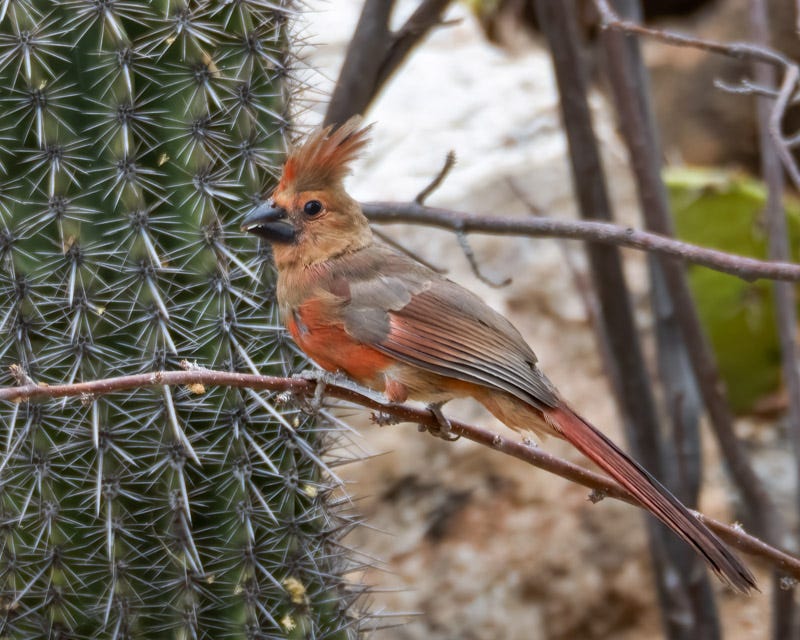
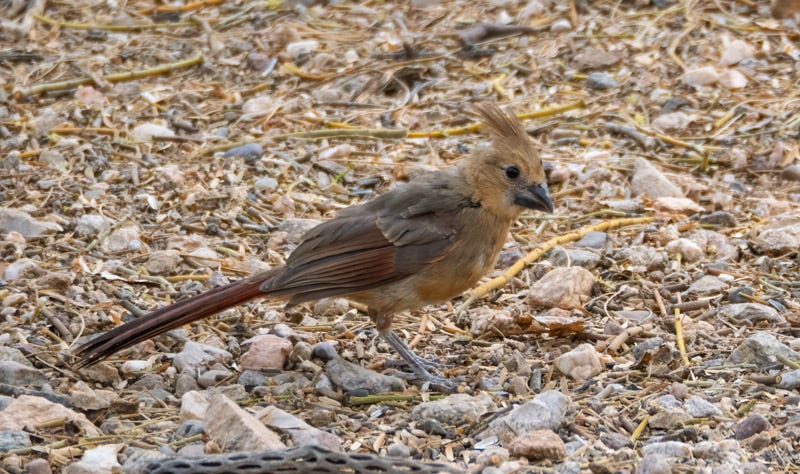

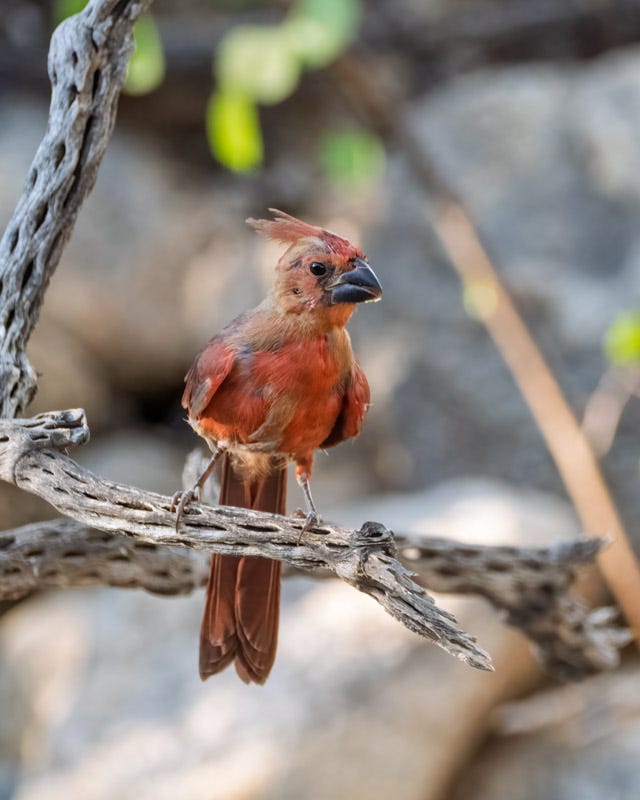
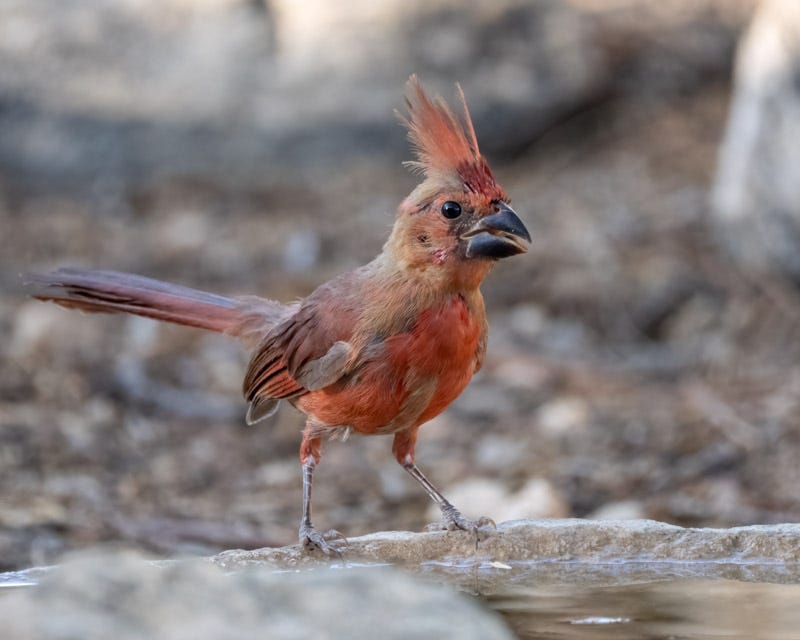
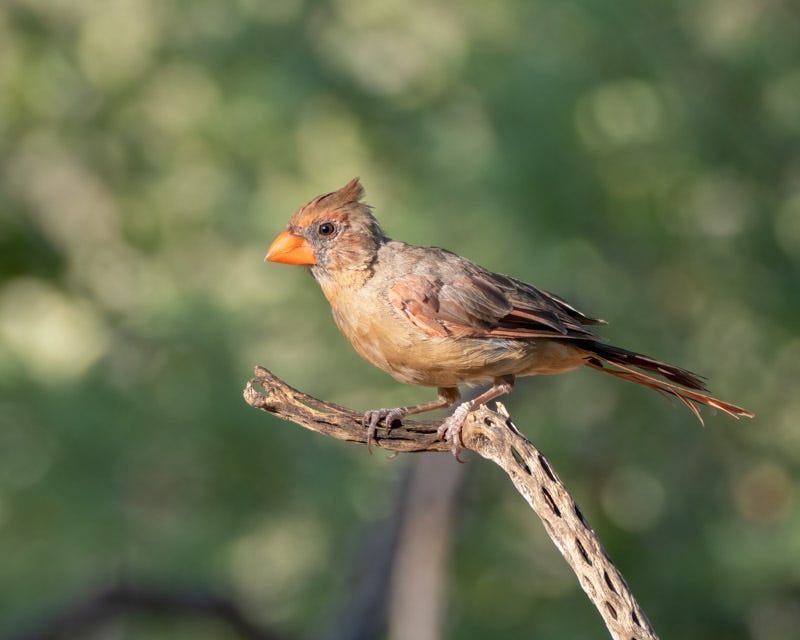
Those awkward-looking juveniles grow into such beautiful adults. Thanks for these beautiful photos and explanations.
You know that I have a soft spot for Northern Cardinals!